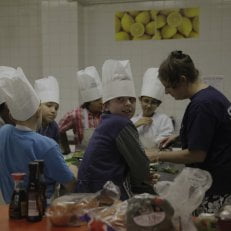Cultivating a Culture of Giving: The Heartbeat of School Community Building
In my first fundraising job, I was introduced to the concept of the culture of giving. At that time, it was explained in the imagery of a farmer sowing their seeds and reaping the harvest. This image has stuck with me throughout my fundraising career, and I think it is a helpful tool for schools considering what they can do to create a culture of giving.
Creating a culture of giving not only bolsters fundraising income but also nurtures a sense of community and shared purpose within a school. At its core, it means fostering an environment where the act of asking for support is not just routine but natural, anticipated, and genuinely welcomed both internally and externally.
The Three Pillars of Building a Culture of Giving
Building a culture of giving within a school involves three essential pillars. Each pillar plays a unique role in cultivating a culture where generosity and support are not just encouraged but celebrated.
1. Asking More People and More Often: Sowing the Seeds of a Culture of Giving
The most crucial aspect of nurturing a culture of giving is to ask more people more often. Just as a farmer has to sow seeds before he can see a harvest, a fundraiser has to ask before they can receive a donation. Asking is about providing people with the opportunity to make a tangible impact on the school and the wider community. It entails ensuring that everyone – from parents to staff, leadership, the local community, and alumni – is given the chance to support and participate in fundraising activities. Leadership plays a particularly pivotal role in this process. When leaders willingly ask and give, they set the tone for the entire organisation. The readiness of leadership to both ask for support and contribute makes the act more comfortable and natural, fostering a culture of giving. Additionally, a robust major donor giving program is essential and should be celebrated. It not only raises the bar but also builds confidence in potential donors, conveying the school’s worthiness as a cause to support. While not everyone may contribute at that level, instituting a regular giving ask engages a broader audience. Schools can also consider replacing one or two traditional events with community fundraising initiatives such as sponsored runs/walks or bake-offs. These events foster student and local community involvement, inviting everyone to participate and, importantly, donate.
2. A Compelling Case for Support: Nurturing the Seeds of Giving
At the heart of a strong culture of giving lies a compelling case for support. This represents the seeds of giving, planting the vision and impact in the hearts and minds of the school community. Like a farmer clearly outlining the goals of a planting season, the case for support should vividly articulate the school’s needs and objectives. It should include ask amounts based on tangible outcomes, and establish a direct connection between giving and its effect. For example, giving a specific amount could directly fund a percentage of a bursary, making the cause-and-effect relationship transparent and meaningful.
3. Celebrating and Communicating: The Harvest of Community and Generosity
Harvesting donations, thanking, celebrating, and effective communication are the final steps in nurturing a culture of giving. The more people give, and the more their giving is celebrated and communicated, the more likely it is to inspire further contributions. Sharing stories of fundraising success and the positive impact they have on the community reinforces the cycle of giving. These stories become an integral part of the school’s narrative, resulting in growth in both fundraising and community spirit.
In conclusion, just as a farmer sows seeds generously with the anticipation of a rich harvest, schools can cultivate a culture of giving. This culture, rooted in asking more people, more often, a compelling vision, and positive communication, not only enhances fundraising but also fosters community and engagement, and a shared responsibility within the school. It becomes the bridge that connects students, parents, staff, and the entire community, creating a brighter, more connected future for all.
CraigmyleSchoolsWeek
Day 3 https://www.craigmyle.org.uk/tips-and-blogs/fundraising-for-schools-the-long-view/
Day 4 https://www.craigmyle.org.uk/tips-and-blogs/interview-with-holly-mumford-and-christine-buccella/





